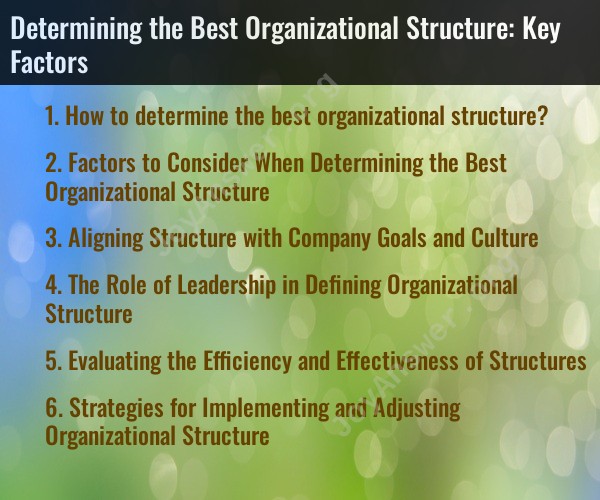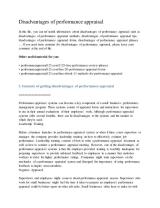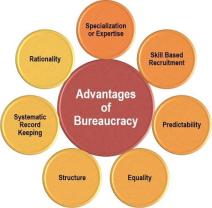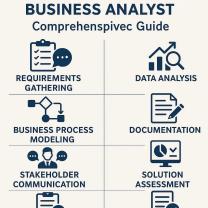How to determine the best organizational structure?
The best organizational structure for a particular company or organization depends on various factors, including its size, industry, goals, culture, and the specific roles and functions it needs to support. Here are some key factors to consider when determining the best organizational structure:
Company Size and Complexity:
- Small companies might have a simple, flat structure with few layers of management, while larger organizations often require more complex structures with multiple hierarchical levels.
Industry and Market Environment:
- The nature of your industry can influence the structure. For example, a creative agency might benefit from a more decentralized, team-based structure, while a manufacturing company might require a more hierarchical setup.
Company Goals and Strategy:
- Your organizational structure should align with your company's goals and strategic priorities. If rapid innovation is key, a flatter structure might be more suitable. If cost efficiency and stability are paramount, a more traditional hierarchy might work better.
Culture and Values:
- Consider your organization's culture and values. Some cultures thrive in a collaborative, matrix-style structure, while others may prefer a more traditional, top-down approach.
Geographic Spread:
- If your organization operates in multiple locations, you might need a structure that accommodates remote or distributed teams.
Customer and Stakeholder Needs:
- Your structure should support the effective delivery of products or services to your customers and meet the needs of stakeholders.
Legal and Regulatory Requirements:
- Depending on your industry, there may be legal or regulatory requirements that dictate the structure or reporting relationships.
Talent and Skills:
- Assess the skills and expertise of your employees. Your structure should make the best use of their talents and provide opportunities for growth.
Technology and Information Flow:
- Consider how information flows within the organization. Technology can enable new, more flexible structures, but it should support your needs, not dictate them.
Adaptability and Flexibility:
- In a rapidly changing business environment, an organization's structure should be adaptable and allow for quick responses to market shifts and opportunities.
Costs and Efficiency:
- Evaluate the cost implications of your chosen structure. Some structures can be more cost-effective, while others may require more overhead.
Communication and Decision-Making:
- Think about how decisions are made and how information is communicated. Your structure should facilitate effective communication and decision-making processes.
Employee Morale and Engagement:
- The structure should promote employee engagement and job satisfaction. Consider factors like workload balance, empowerment, and recognition.
Competitive Landscape:
- Analyze your competitors' structures to identify potential advantages or disadvantages in your own structure.
Future Growth and Scalability:
- Consider how your organization's structure will support future growth. Will it scale easily, or will it need to be reconfigured as the company expands?
When determining the best organizational structure, it's often helpful to engage in a thorough analysis of these factors, seek input from key stakeholders, and possibly consult with organizational design experts. Keep in mind that organizational structures are not static; they may need to evolve as the organization changes and adapts to new challenges and opportunities.
Factors to Consider When Determining the Best Organizational Structure
An organizational structure is the formal framework that defines how an organization's tasks are divided, grouped, and coordinated. It determines how information flows between different levels of management and how employees work together to achieve organizational goals.
There are several factors to consider when determining the best organizational structure for a company, including:
- Company size and stage of development: Smaller, newer companies often have flatter, less formal structures, while larger, more established companies may have more complex, hierarchical structures.
- Industry and competitive landscape: The type of industry and the level of competition may influence the most effective structure. For example, companies in fast-paced, dynamic industries may benefit from more flexible, adaptable structures.
- Company goals and objectives: The structure should align with the company's overall goals and objectives. For instance, a company focused on innovation may need a structure that encourages creativity and collaboration.
- Employee skills and expertise: The structure should be designed to utilize the skills and expertise of the workforce effectively.
- Technology and information systems: The structure should support the use of technology and information systems to enhance efficiency and productivity.
Aligning Structure with Company Goals and Culture
Aligning the organizational structure with the company's goals and culture is crucial for achieving success. When the structure supports the company's vision and values, it can foster employee engagement, motivation, and alignment.
Here are some strategies for aligning structure with goals and culture:
- Clearly define company goals and objectives: Ensure that everyone in the organization understands the company's mission, vision, and strategic priorities.
- Identify core values: Define the company's core values and incorporate them into the structure and decision-making processes.
- Encourage communication and collaboration: Foster a culture of open communication and collaboration to break down silos and promote teamwork.
- Empower employees: Provide employees with the autonomy and decision-making authority to contribute to the company's success.
- Recognize and reward achievements: Regularly recognize and reward employees for their contributions to aligning the structure with the company's goals and culture.
The Role of Leadership in Defining Organizational Structure
Leadership plays a critical role in defining and implementing an effective organizational structure. Leaders are responsible for shaping the company's culture, aligning the structure with goals, and ensuring that the structure supports the organization's mission and vision.
Effective leaders consider the following aspects when defining organizational structure:
- Understanding the company's needs and challenges: Leaders should thoroughly assess the company's current situation, identify areas for improvement, and determine how the structure can address these challenges.
- Involving stakeholders in decision-making: Leaders should involve key stakeholders, including employees, managers, and board members, in the process of defining the structure to gain diverse perspectives and ensure buy-in.
- Communicating the structure effectively: Clearly communicate the rationale behind the chosen structure, its benefits, and how it aligns with the company's goals and values.
- Adapting to change: Be prepared to adapt the structure as the company grows, evolves, and faces new challenges.
Evaluating the Efficiency and Effectiveness of Structures
Regularly evaluating the efficiency and effectiveness of the organizational structure is essential to ensure it continues to support the company's goals and objectives. This evaluation process should involve gathering feedback from employees, analyzing performance metrics, and identifying areas for improvement.
Common methods for evaluating organizational structures include:
- Employee surveys: Conduct surveys to gather feedback from employees on their satisfaction with the structure, communication flows, and decision-making processes.
- Performance audits: Review key performance indicators (KPIs) to assess the effectiveness of the structure in achieving organizational goals, such as productivity, profitability, and customer satisfaction.
- Benchmarking: Compare the company's structure to industry best practices and identify areas where the structure can be improved.
- External reviews: Engage external consultants or experts to conduct a comprehensive review of the structure and provide recommendations for improvement.
Strategies for Implementing and Adjusting Organizational Structure
Implementing and adjusting an organizational structure often requires careful planning, communication, and change management strategies.
Here are some key steps for implementing and adjusting organizational structures:
- Develop a clear plan: Create a detailed plan that outlines the changes to be made, the timeline for implementation, and the communication strategy.
- Involve stakeholders early and often: Engage employees, managers, and other key stakeholders throughout the process to address concerns, gather feedback, and foster buy-in.
- Communicate effectively and transparently: Provide clear and regular communication to all employees about the changes, the rationale behind them, and the expected benefits.
- Provide training and support: Offer training and support to employees to help them adapt to the new structure and ensure a smooth transition.
- Monitor and evaluate the impact:












